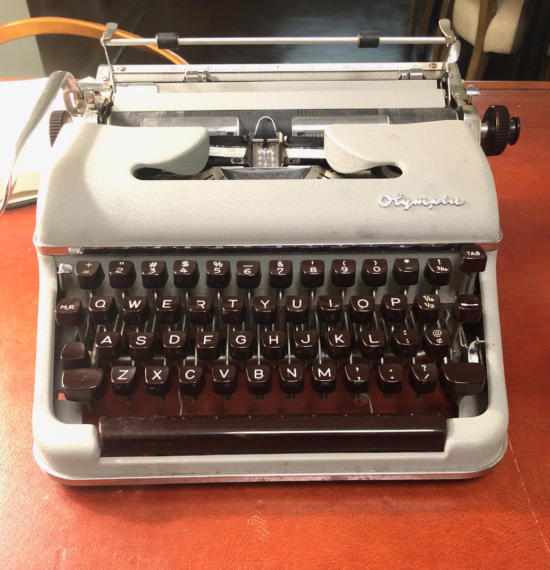Every now and then, an old tool can ignite a lost art. For me, a 1957 Olympia SM3 typewriter did exactly that. I came across the typewriter on a recent trip back to New Jersey and re-found it in my Uncle’s house. The Olympia was my grandmother’s who sadly passed away years ago.
Several questions were sparked about this new, old machine. How old is it? What type of letters were written on it? How do you use it now? Does it still work? What needs to happen to get it working again?
A few hours of internet browsing confirmed the large number of typewriter enthusiasts out there. For example, this video has 17,000 views of a great run-through of the 1957 SM3 typewriter. These 8 minutes are gold for a newbie.
The benefits of using a typewriter significantly outweigh the minimal hassle.
Since putting the 1957 typewriter in action around mid August, I’ve written exactly 25 letters. They range from family (wife first), friends, and acquaintances. Letters written range from thank you’s to random messages of encouragement.
A letter may seem no different than any other form of communication such as a tweet, email, or text but two factors make it much different: context and voice.
When you write a letter, a new voice is created. The voice is very different than a text message, an email voice, or even a blog voice. Second, a physical letter produces a new context in how the reader experiences the message. Most words I read on a physical paper are either in a book or mail. My mail is usually junk or bills. A physical letter with a positive message of support or gratitude brings a rare surprise and delight.
One last, not so small item occurs with a typewriter that I didn’t understand until writing my first letter. You must be precise. You can’t mess up and if you do, the delete key doesn’t save you. Starting new is the best option; the second best option is white out and a pen.
When a perfectly typed letter is received, the thought and discipline around it speaks volumes compared to an email or text.
Of course, email and text will always be more efficient and expeditious, but some communication still works best in a physical world. In building meaningful relationships, a hand-written or typed out letter goes much further than most other forms of communication.

